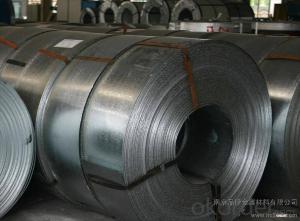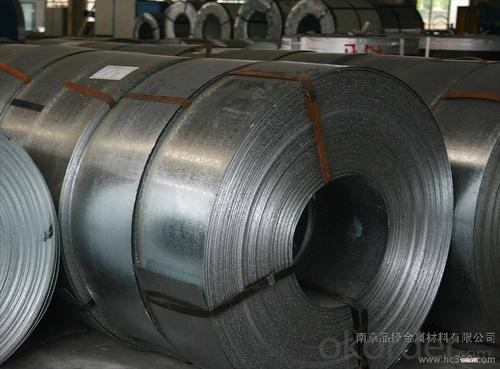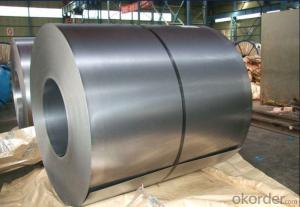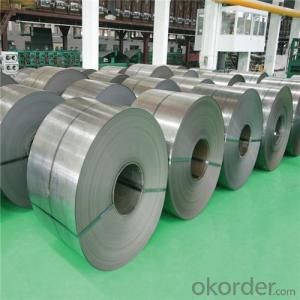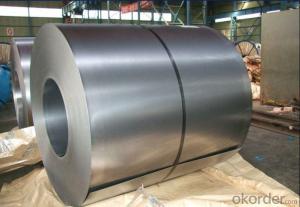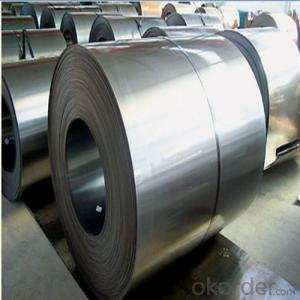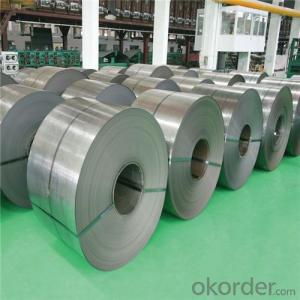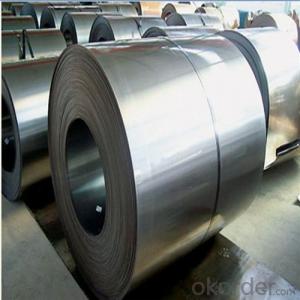Cold Rolled Steel Coil Used for Industry with Kind Price and Service
- Loading Port:
- Tianjin
- Payment Terms:
- TT OR LC
- Min Order Qty:
- 25 m.t.
- Supply Capability:
- 9000 m.t./month
OKorder Service Pledge
OKorder Financial Service
You Might Also Like
Pure Cold Rolled Steel Coil Used for Industry
1.Structure of Cold Rolled Steel Coil Description
Cold rolling means that hot rolled steel coil is rolled below recrystallization temperature after pickling, and its finished product is full hard coil. After annealing process for full hard coil, the finished product is cold rolled production. The thin gauge cold rolled steel sheet and strip steel have advantages of low surface roughness, high dimension accuracy and good mechanical properties etc, and which have been widely used in auto manufacturing, home appliance, architecture, aviation, precision instrument, hardware and enameling industry etc.
2.Main Features of the Cold Rolled Steel Coil
•High Purity
•Easy control and operation
•High strength
•Fast melting
•Competitive price
•Best Service
3. Cold Rolled Steel Coil Images
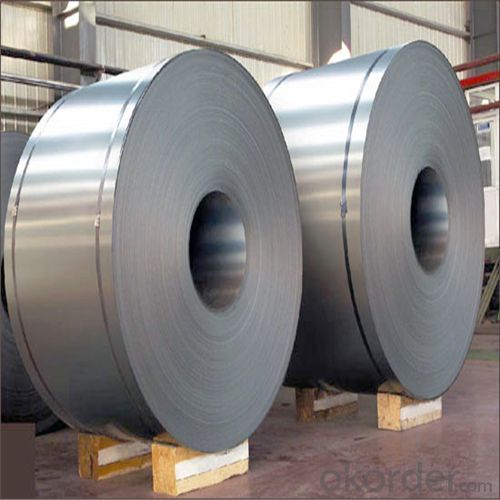

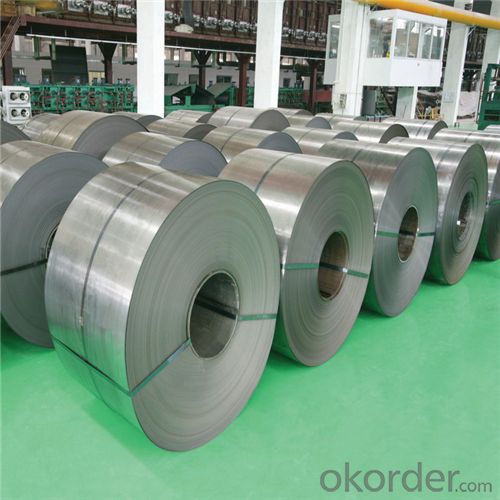
4. Cold Rolled Steel Coil Specification
COLD ROLLED STEEL COIL | |
Thicknenss | 0.10mm-4.00mm |
Width | 600mm-2000mm |
Sheets length | 1200-6000mm |
Coil inner diameter | 508-610mm |
Surface treatement | matt finish/bright finish,oiling/dry, bright anneal/black anneal |
Coil weight | 3-5t |
5.FAQ of Cold Rolled Steel Coil
We have organized several common questions for our clients,may help you sincerely:
①How about your company?
A world class manufacturer & supplier of castings forging in carbon steel and alloy steel,is one of the large-scale professional investment casting production bases in China,consisting of both casting foundry forging and machining factory.
②How to guarantee the quality of the products?
We have established the international advanced quality management system,every link from raw material to final product we have strict quality test;We resolutely put an end to unqualified products flowing into the market. At the same time, we will provide necessary follow-up service assurance.
③How long can we receive the product after purchase?
In the purchase of product within three working days, We will arrange the factory delivery as soon as possible. The pecific time of receiving is related to the state and position of customers.Commonly 7 to 10 working days can be served.
- Q: What are the different types of steel coil finishing equipment?
- Various industries utilize a range of steel coil finishing equipment to ensure that steel coils are properly prepared and finished according to the desired specifications. Some commonly used equipment includes: 1. Slitting lines, which cut large steel coils into narrower strips using multiple slitting knives at high speeds. These are commonly used in automotive, construction, and packaging industries. 2. Leveling lines, which flatten and straighten steel coils with uneven surfaces or irregularities using leveling rolls and tension control systems. These are commonly used in the manufacturing of appliances, furniture, and metal roofing. 3. Recoiling lines, which rewind steel coils into smaller coils of specific diameter and weight by carefully winding them around a mandrel. These are commonly used in electrical, HVAC, and steel distribution industries. 4. Cut-to-length lines, which cut steel coils into specific lengths as per customer requirements using precision measuring systems and hydraulic shears. These are commonly used in manufacturing, construction, and fabrication industries. 5. Coating lines, which apply protective coatings or finishes on steel coils to enhance corrosion resistance, durability, and appearance. These lines typically consist of cleaning and pre-treatment sections, followed by coating application sections. They are commonly used in automotive, appliances, and construction industries. These examples represent just a few of the available types of steel coil finishing equipment. Each type serves a specific purpose and plays a crucial role in the manufacturing and processing of steel coils for various applications.
- Q: Can steel coils be coated with anti-static materials?
- Yes, steel coils can be coated with anti-static materials. These materials are specifically designed to reduce or eliminate static electricity buildup on the surface of the steel coils, which can be beneficial in various industrial applications where static discharge can cause damage or safety hazards.
- Q: Can steel coils be coated with anti-microbial materials?
- Yes, steel coils can be coated with anti-microbial materials. These coatings can help inhibit the growth of bacteria, fungi, and other microorganisms, making the steel coils more resistant to contamination and reducing the risk of transmission of harmful pathogens.
- Q: Im getting a new guitar soon, and it has steel strings. ive heard that nilon strings are better? thanks:)
- Nylon is allegedly better for beginners because they don't cut into the fingers as much. Steel sounds much better, though.
- Q: Im going to buy T-304 Stainless Steel exhaust tips for my truck. Is T-304 Stainless Steel good metal?
- Stainless steel is available in 2 grades - 304 and 316. The 304 has traces of ferrous to make it adaptable for the intended purpose. The 316 is non-ferrous and a bit more expensive. Whereas the 316 will not inhibit rust, the 304 will show some flecks (which can be cleaned away) over a period of time. It, however, is as good as the other.
- Q: How do steel coils contribute to the energy sector?
- Steel coils contribute to the energy sector in various ways. Firstly, steel coils are used in the manufacturing of equipment and infrastructure that is essential for energy production and distribution. For example, they are used in the construction of power plants, transmission towers, and pipelines. These structures require strong and durable materials, and steel coils provide the necessary strength and reliability. Moreover, steel coils play a crucial role in the renewable energy sector. They are used in the production of wind turbines and solar panels. Wind turbines require steel coils for their towers, while solar panels use steel frames to provide support and durability. As the demand for renewable energy sources continues to grow, the use of steel coils in this sector is expected to increase as well. Furthermore, steel coils are used in the production of electrical transformers. Transformers are vital components in the energy sector, as they facilitate the transmission and distribution of electricity. Steel coils are used to create the core of the transformer, which is responsible for the efficient transfer of electrical energy. The quality and reliability of the steel coils used in transformers are essential to ensure the smooth functioning of the electrical grid. In addition to their direct applications, steel coils also contribute to the energy sector indirectly. Steel is a recyclable material, and the recycling process consumes less energy compared to the production of new steel. By using recycled steel coils, the energy sector can reduce its carbon footprint and contribute to a more sustainable and environmentally friendly energy production process. Overall, steel coils are a vital component in the energy sector. They are used in the manufacturing of equipment and infrastructure, including power plants, transmission towers, wind turbines, solar panels, and electrical transformers. Additionally, the recyclability of steel contributes to the sustainability of the energy sector.
- Q: How are steel coils processed before they are used in manufacturing?
- Steel coils undergo several processing steps before they are used in manufacturing. The first step is called pickling, where the coils are immersed in an acid bath to remove any surface impurities, such as rust or scale. This helps to improve the surface quality of the steel. After pickling, the coils go through a process called cold rolling. This involves passing the coils through a series of rollers to reduce their thickness and improve their dimensional accuracy. Cold rolling also enhances the mechanical properties of the steel, making it stronger and more durable. Next, the coils are annealed, which involves heating them to a specific temperature and then slowly cooling them. Annealing helps to relieve internal stresses in the steel and improves its formability and ductility. Following the annealing process, the coils may undergo additional surface treatments, such as galvanizing or coating. Galvanizing involves applying a layer of zinc to protect the steel from corrosion, while coating can involve applying various types of paint or polymer to enhance the steel's appearance or provide specific functionalities. Once the coils have been processed and treated, they are typically cut into smaller sheets or strips, depending on the manufacturing requirements. These sheets or strips can then be used in various manufacturing processes, such as stamping, forming, welding, or fabrication, to create a wide range of products, including automotive components, appliances, construction materials, and many others. In conclusion, steel coils undergo a series of processing steps, including pickling, cold rolling, annealing, and surface treatments, before they are ready to be used in manufacturing. These processes improve the quality, strength, and formability of the steel, allowing it to be transformed into a variety of products.
- Q: What are the different types of coil recoiling machines?
- The different types of coil recoiling machines include manual coil recoilers, semi-automatic coil recoilers, and fully automatic coil recoilers.
- Q: What are the different types of steel coil slitting machines?
- There are several types of steel coil slitting machines, including rotary slitters, loop slitters, and stationary slitters. Rotary slitters use rotating circular blades to cut the coils into desired widths, loop slitters use a looping process to cut the coils, and stationary slitters use stationary blades to slit the coils. Each type of machine has its own advantages and is suitable for different applications.
- Q: How are steel coils used in the manufacturing of wind turbines?
- Steel coils are used in the manufacturing of wind turbines to create various components such as the tower, nacelle, and rotor blades. The high-strength steel coils are shaped and welded to form the tower, providing the necessary structural support for the entire turbine. Additionally, the steel coils are used to fabricate the nacelle, which houses the generator and other critical components. Moreover, steel coils are used in the manufacturing of rotor blades, providing strength and stability to harness wind energy efficiently. Overall, steel coils play a crucial role in the construction of wind turbines, ensuring their durability and performance.
Send your message to us
Cold Rolled Steel Coil Used for Industry with Kind Price and Service
- Loading Port:
- Tianjin
- Payment Terms:
- TT OR LC
- Min Order Qty:
- 25 m.t.
- Supply Capability:
- 9000 m.t./month
OKorder Service Pledge
OKorder Financial Service
Similar products
Hot products
Hot Searches
Related keywords
